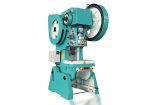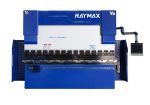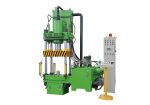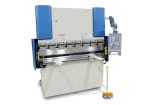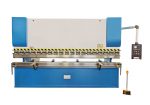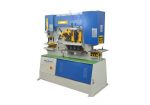A 100 ton metal steel bending machine, also known as a press brake, is a machine tool that allows you to bend and form metal sheets and plates with precision. These machines are used in a variety of industries, including construction, automotive, aerospace, and shipbuilding, to name a few. In this ultimate guide, we will cover everything you need to know about 100 ton metal steel bending machines, including their various types and uses, how they work, and how to choose the right one for your needs.

Types of 100 ton metal steel bending machines
There are several types of 100 ton metal steel bending machines available on the market, each with its own unique features and capabilities. Some of the most common types include:
- Hydraulic press brakes: These machines use hydraulic power to bend and form metal sheets and plates. They are known for their high precision and versatility, as they can be programmed to bend metal to a variety of shapes and angles.
- Mechanical press brakes: These machines use mechanical power to bend and form metal sheets and plates. They are generally less precise than hydraulic press brakes, but they are also generally less expensive and require less maintenance.
- Electric press brakes: These machines use electric power to bend and form metal sheets and plates. They are known for their high precision and speed, as well as their ability to produce consistent and accurate results.
Uses of 100 ton metal steel bending machines
100 ton metal steel bending machines are used in a variety of industries for a variety of purposes. Some common uses include:
- Bending and forming metal sheets and plates for construction projects, such as steel beams and columns for buildings.
- Bending and forming metal sheets and plates for automotive and aerospace parts, such as frames and body panels.
- Bending and forming metal sheets and plates for shipbuilding, such as hulls and decks.
- Bending and forming metal sheets and plates for custom fabrication projects, such as signage and railings.
How 100 ton metal steel bending machines work
100 ton metal steel bending machines work by applying force to a metal sheet or plate in order to bend it to a desired shape or angle. The metal is placed between a punch and a die, and the punch applies pressure to the metal, causing it to bend and form around the die.
There are two main types of press brakes: top-driven and bottom-driven. In a top-driven press brake, the punch is located on the top of the machine and moves downward to apply pressure to the metal. In a bottom-driven press brake, the die is located on the bottom of the machine and moves upward to form the metal.
100 ton metal steel bending machines can be operated manually or automatically. Manual press brakes require the operator to manually position the metal and activate the press, while automatic press brakes are programmed to bend the metal to a specific shape or angle and can be operated using a control panel or computer.
Factors to consider when choosing a 100 ton metal steel bending machine
When choosing a 100 ton metal steel bending machine, there are several factors you should consider to ensure you get the right machine for your needs. Some of the most important factors to consider include:
- Type of metal: Different types of metal require different levels of force to bend and form. Be sure to choose a press brake that is capable of handling the type of metal you will be working with.
- Thickness of the metal: The thickness of the metal you will be working with will also affect the type of press brake you need. Be sure to choose a machine that is capable of handling the thickness of the metal you will be working with.
- Bending radius: The bending radius is the distance between the bend and the inner radius of the bend. Be sure to choose a press brake with a bending radius that is suitable for the shapes and angles you will be producing.
- Length of the metal: The length of the metal you will be working with will affect the size of the press brake you need. Be sure to choose a machine that is capable of handling the length of the metal you will be working with.
- Type of control: As mentioned earlier, press brakes can be operated manually or automatically. If you will be producing a high volume of parts, an automatic press brake may be a better choice as it can operate more quickly and efficiently. If you only need to produce a small number of parts, a manual press brake may be sufficient.
- Budget: Press brakes can range in price from a few thousand dollars for a basic manual machine to hundreds of thousands of dollars for a high-end automatic machine. Be sure to choose a machine that fits your budget and meets your needs.
- Maintenance and repair: Press brakes require regular maintenance and may need repairs from time to time. Be sure to choose a machine from a reputable manufacturer that offers good customer support and has a track record of reliable performance.
- Safety features: Press brakes can be dangerous machines, so be sure to choose one that has the necessary safety features, such as guards and emergency stop buttons.
In conclusion, a 100 ton metal steel bending machine is a versatile and essential tool for a variety of industries. By considering the various types and uses of press brakes, understanding how they work, and considering the key factors when choosing a machine, you can find the right press brake for your needs.

